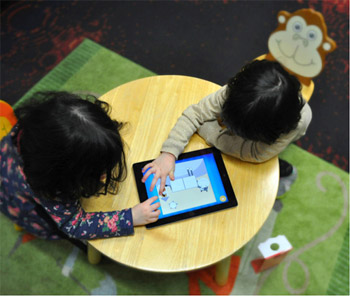A Guide To Kids Educational Apps

A Guide To Kids Educational Apps
An evidence-based guide to help parents, educators and app designers assess the educational impact of apps for children has been developed by an international team of researchers.
Drawing on decades of scientific research about how children learn best, the team identified four pillars of learning that make an app educational. Their findings have been published in Psychological Science in the Public Interest.
'With the introduction of the iPad only five years ago, the market has been flooded with thousands of apps for young children labelled -educational'," one of the researchers, Dr Jordy Kaufman from Swinburne University of Technology's Babylab, said.
'Until now, it has been difficult to determine whether or not these apps have any educational value."
Dr Kaufman said to be considered educational, apps must encourage active, engaged, meaningful and socially interactive learning.
Active learning
For an app to promote active learning, it requires the use of mental effort. Merely tapping a finger or swiping a screen does not count as the kind of minds-on activity that supports learning.
'A good example of a storybook app that encourages mental activity is one that might ask children to choose among story characters or objects that enhance the storyline," Dr Kaufman said.
Engaged learning
For a child to be engaged, he or she needs to stay on task. On-screen animations and sound effects can distract the child from meeting learning goals.
'Adding all sorts of crazy animations, sticker-like rewards, and other bells and whistles really does not do anything to foster learning," Dr Kaufman said.
'Apps should engage children through intrinsic motivation to learn – by giving children new information – rather than through external rewards, such as giving out virtual stickers."
Meaningful learning
Apps that incorporate meaningful interactions that link to children's lives and existing knowledge will lead to greater retention and understanding.
'A number of apps on the marketplace require shallow memorisation, such as an app that asks a child to touch a triangle and then applauds the child for doing so," Dr Kaufman said.
'Compare this to an app that explains and demonstrates that a triangle has three sides, then asks the child to 'find the triangles" in an everyday, meaningful scene."
Social interaction
App design can incorporate social interaction by involving more than two users to engage in face-to-face interactions around the screen, such as competing in a game, or by asking users to engage in mediated interactions through technologies such as Facetime.
Dr Kaufman believes that while the next generation of apps will be able to reach their potential as effective and engaging educational tools, they cannot replace learning that occurs in the -real world'.
'With a -science of learning' approach, apps will certainly provide learning opportunities unavailable in today's apps. But whether apps can provide entirely new opportunities compared to what can be provided by an excellent teacher is still a lofty goal," Dr Kaufman said.
MORE



